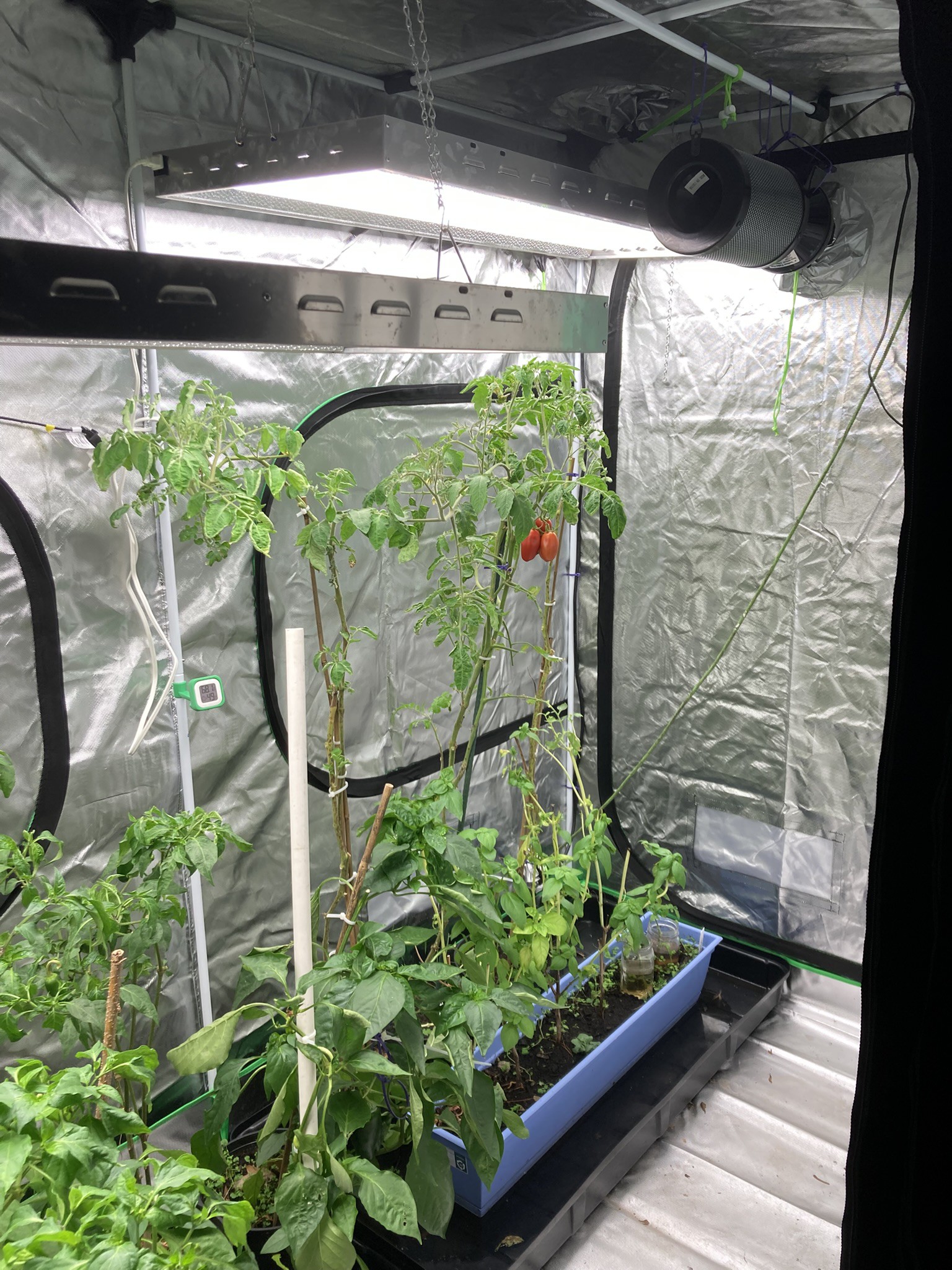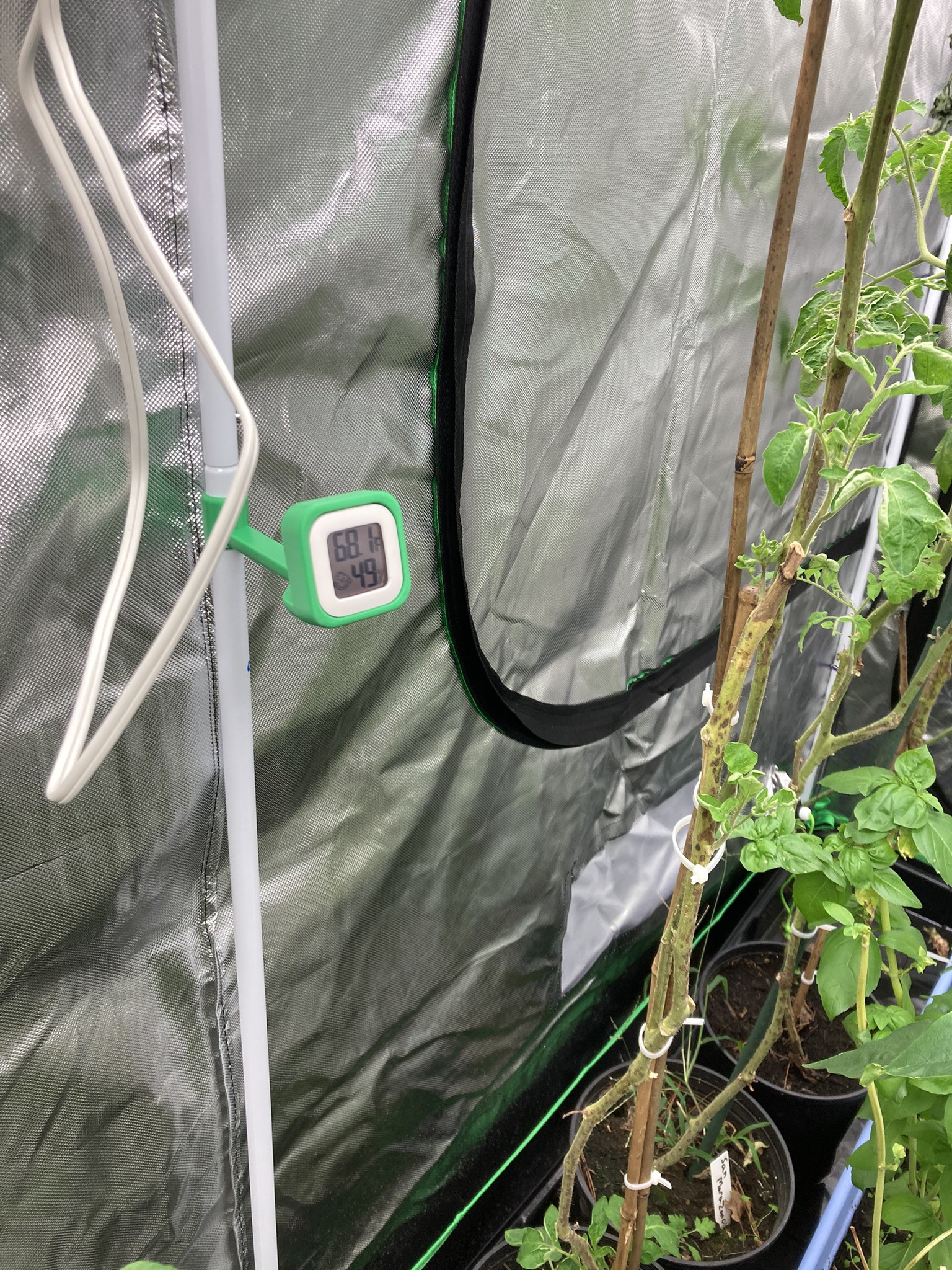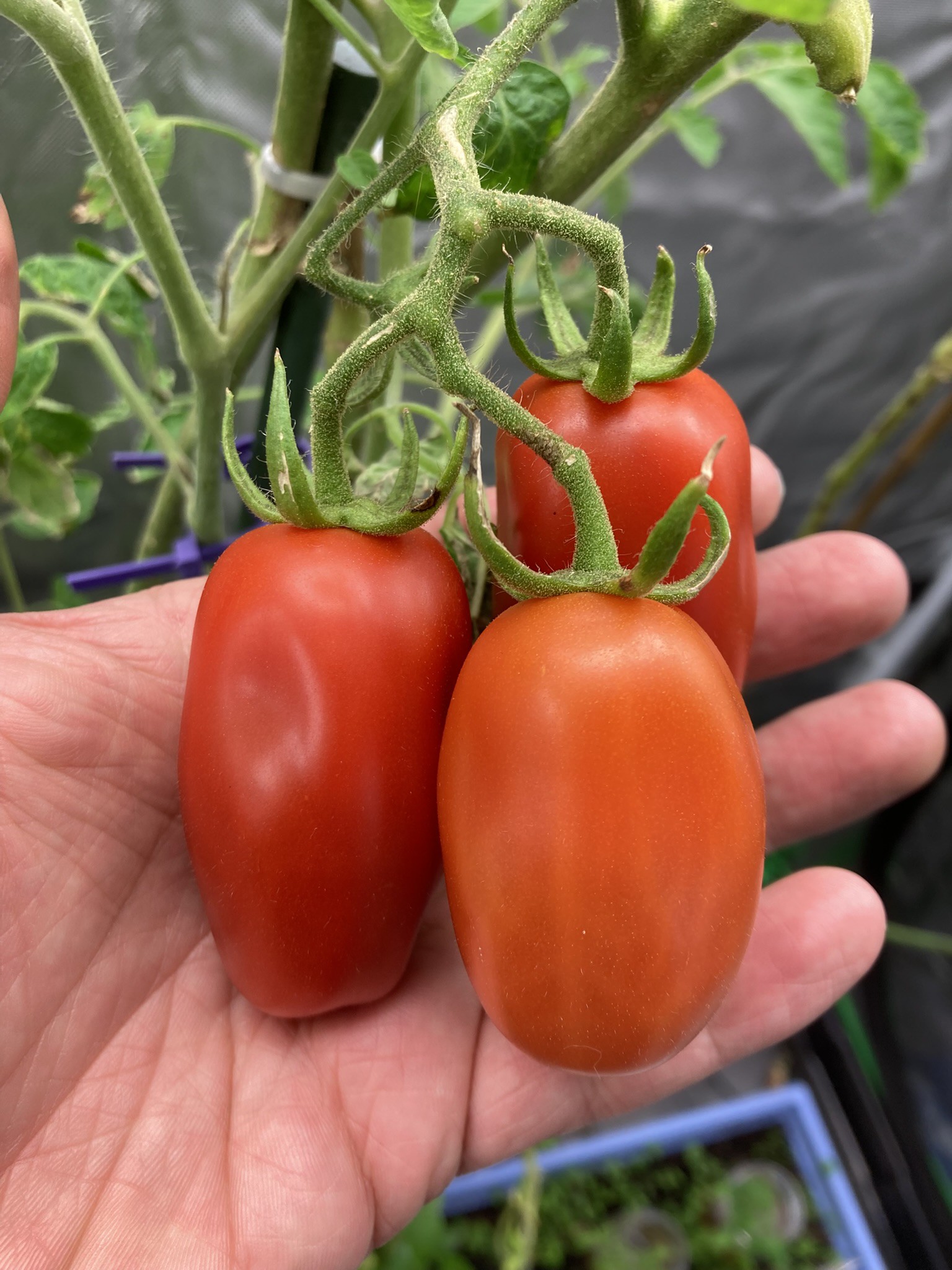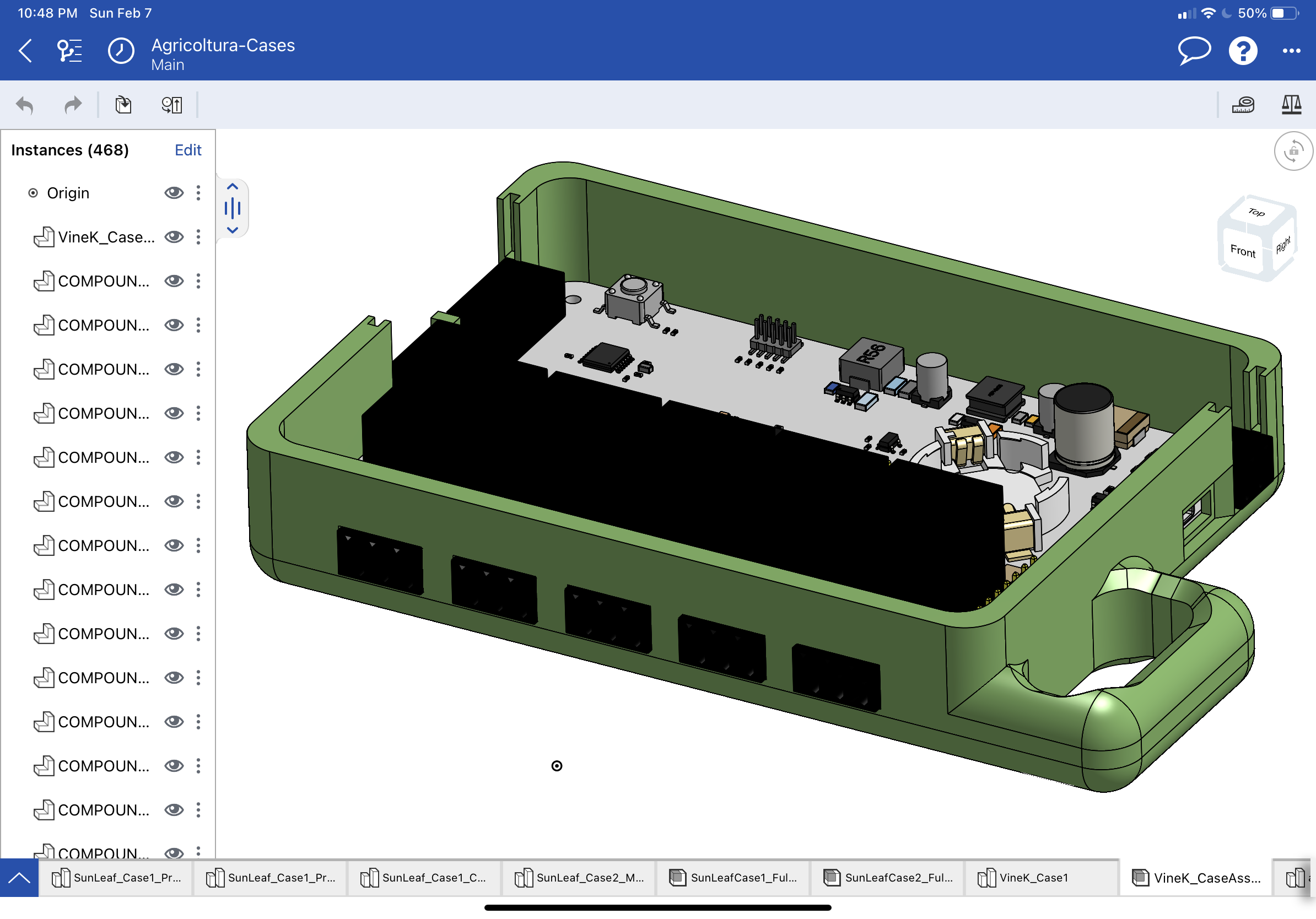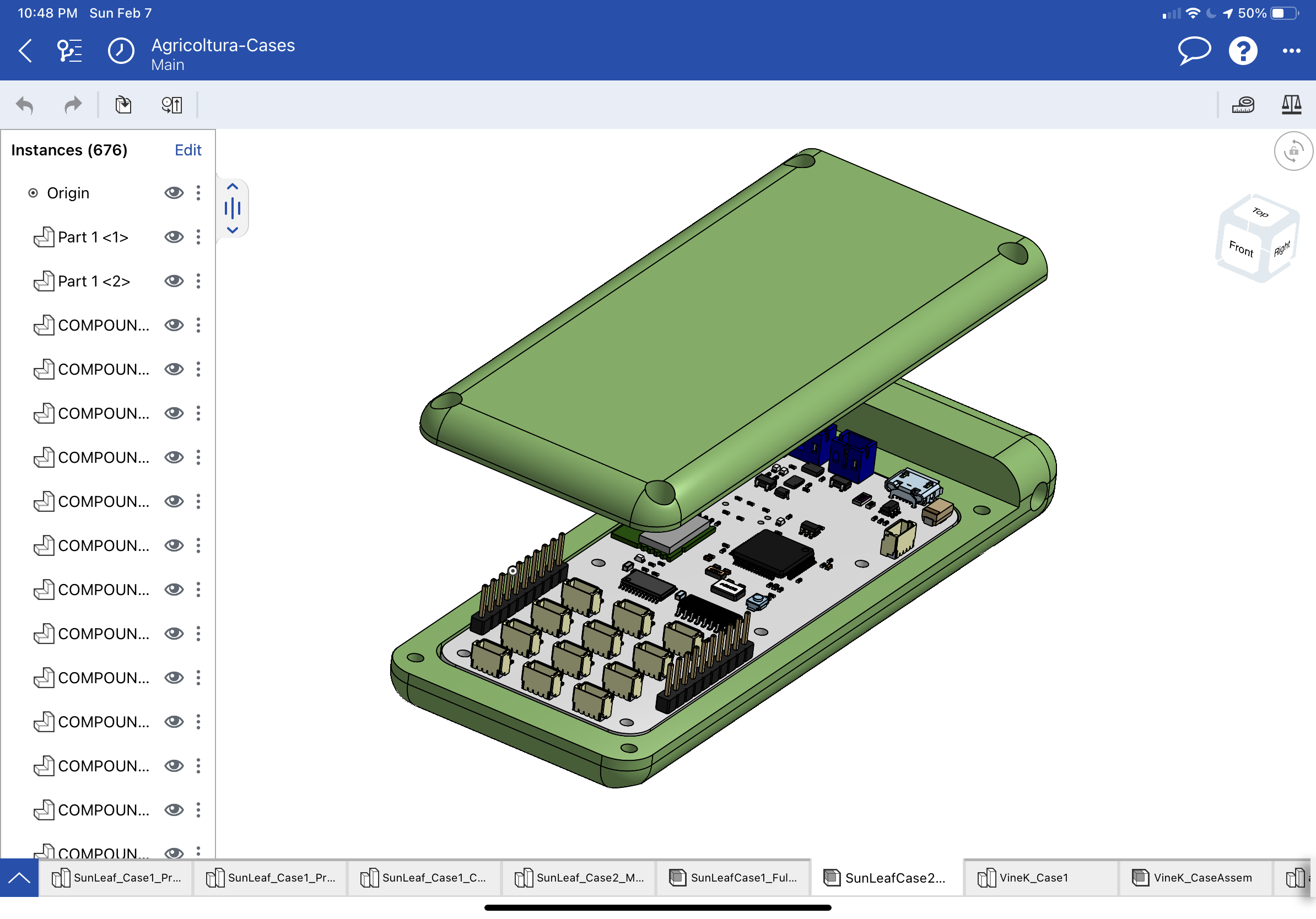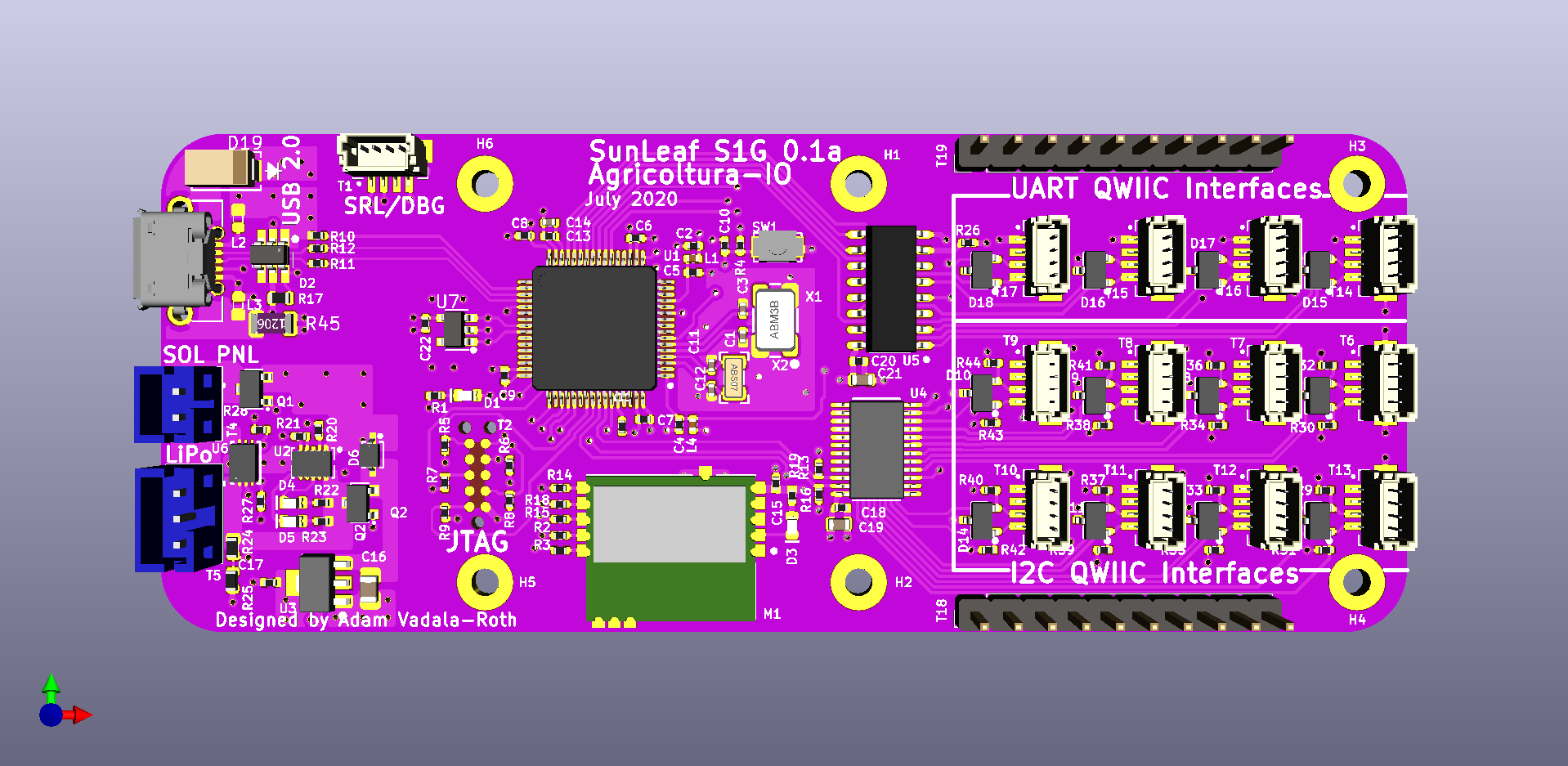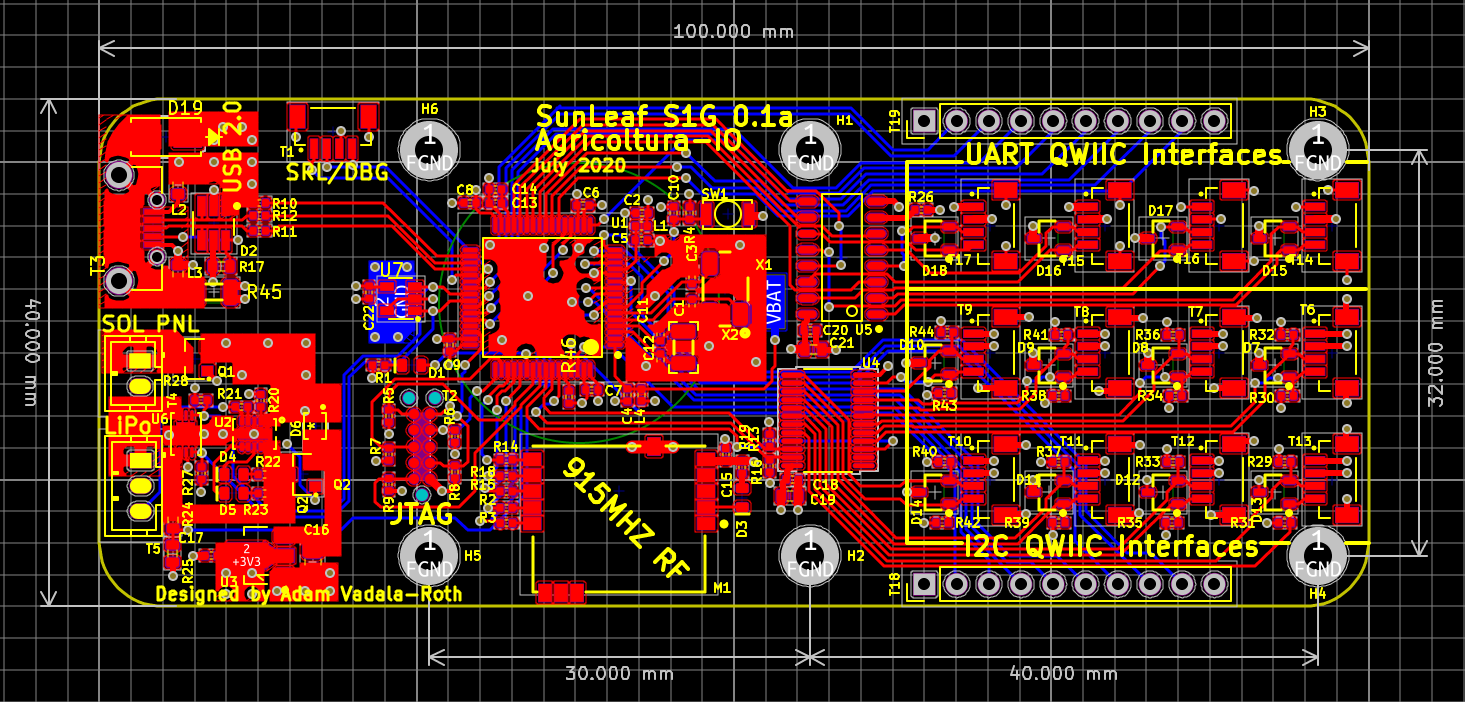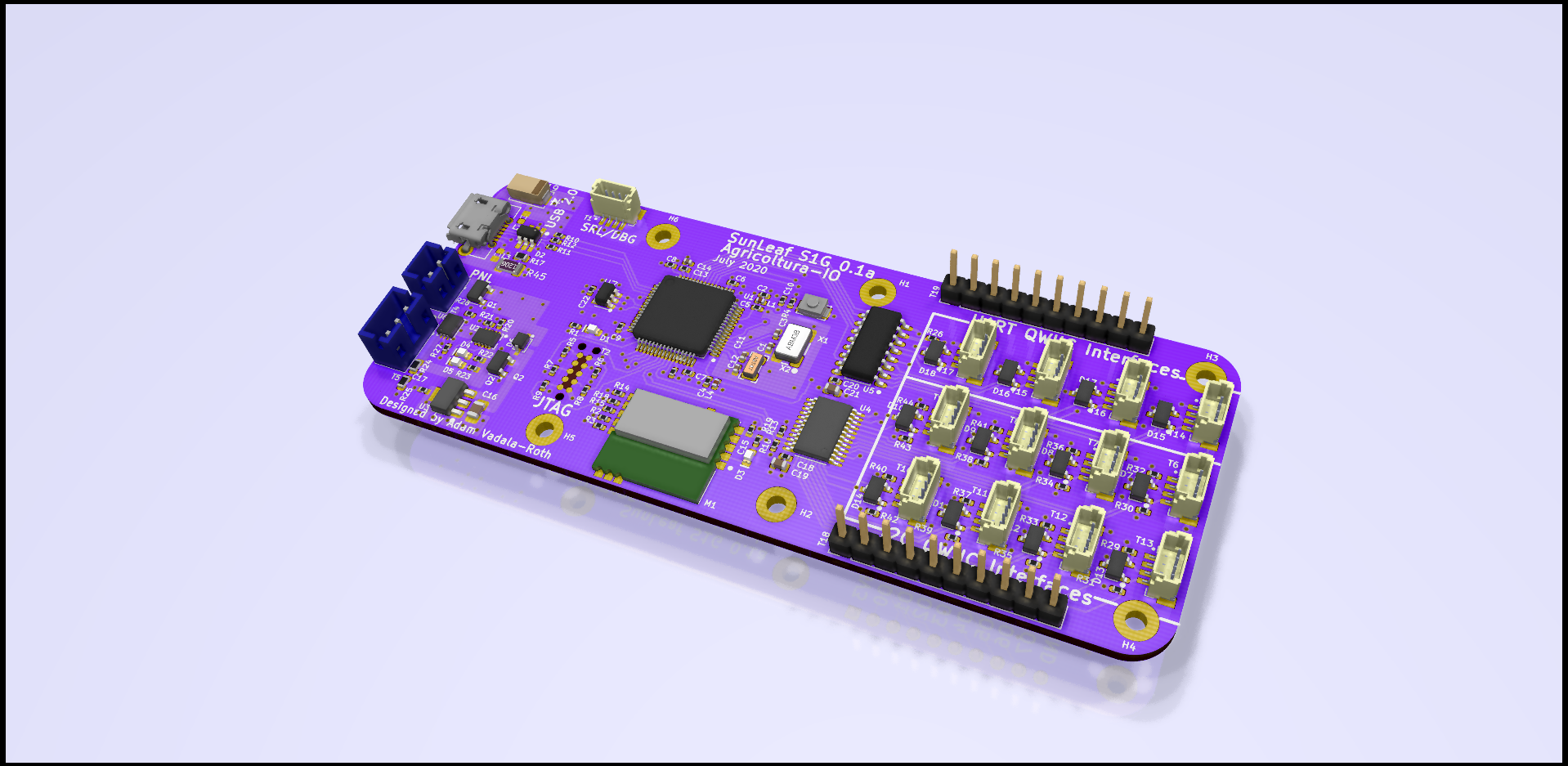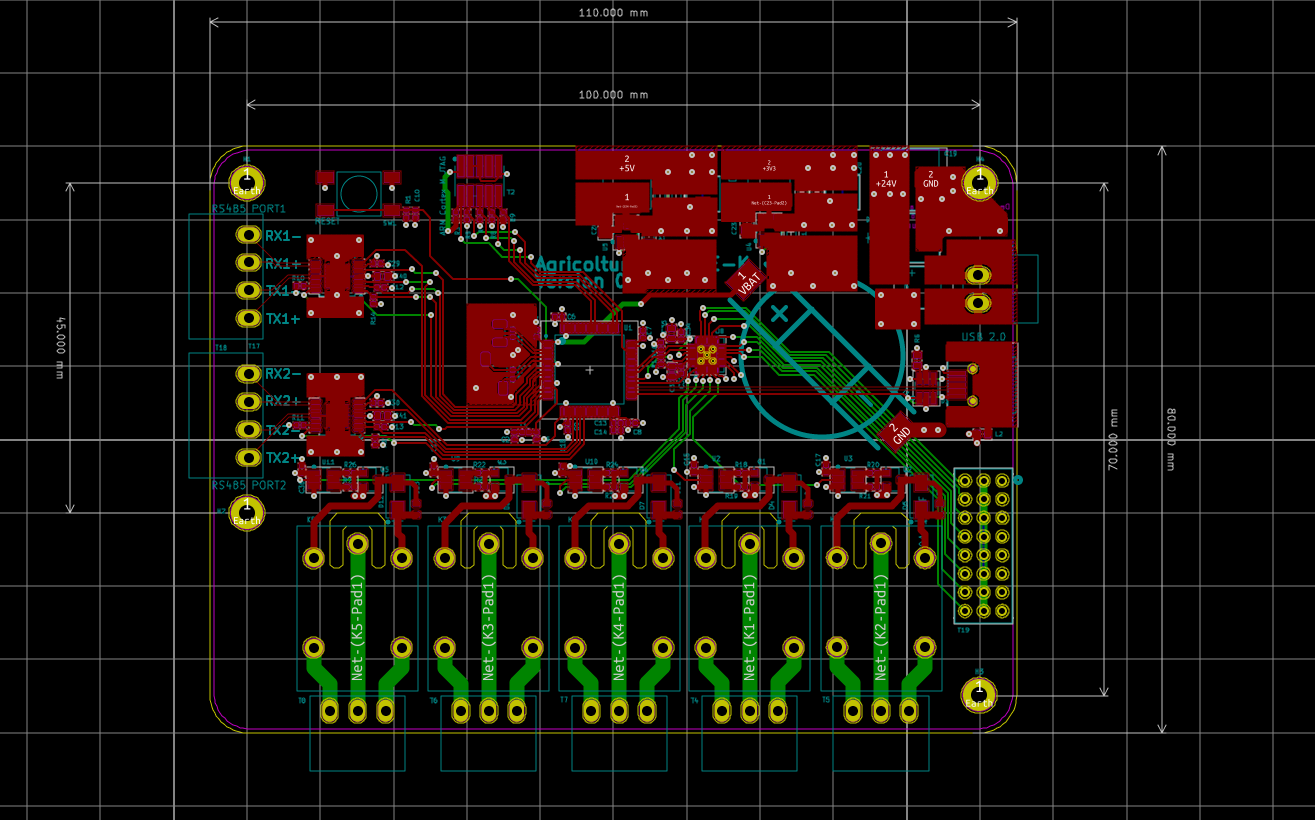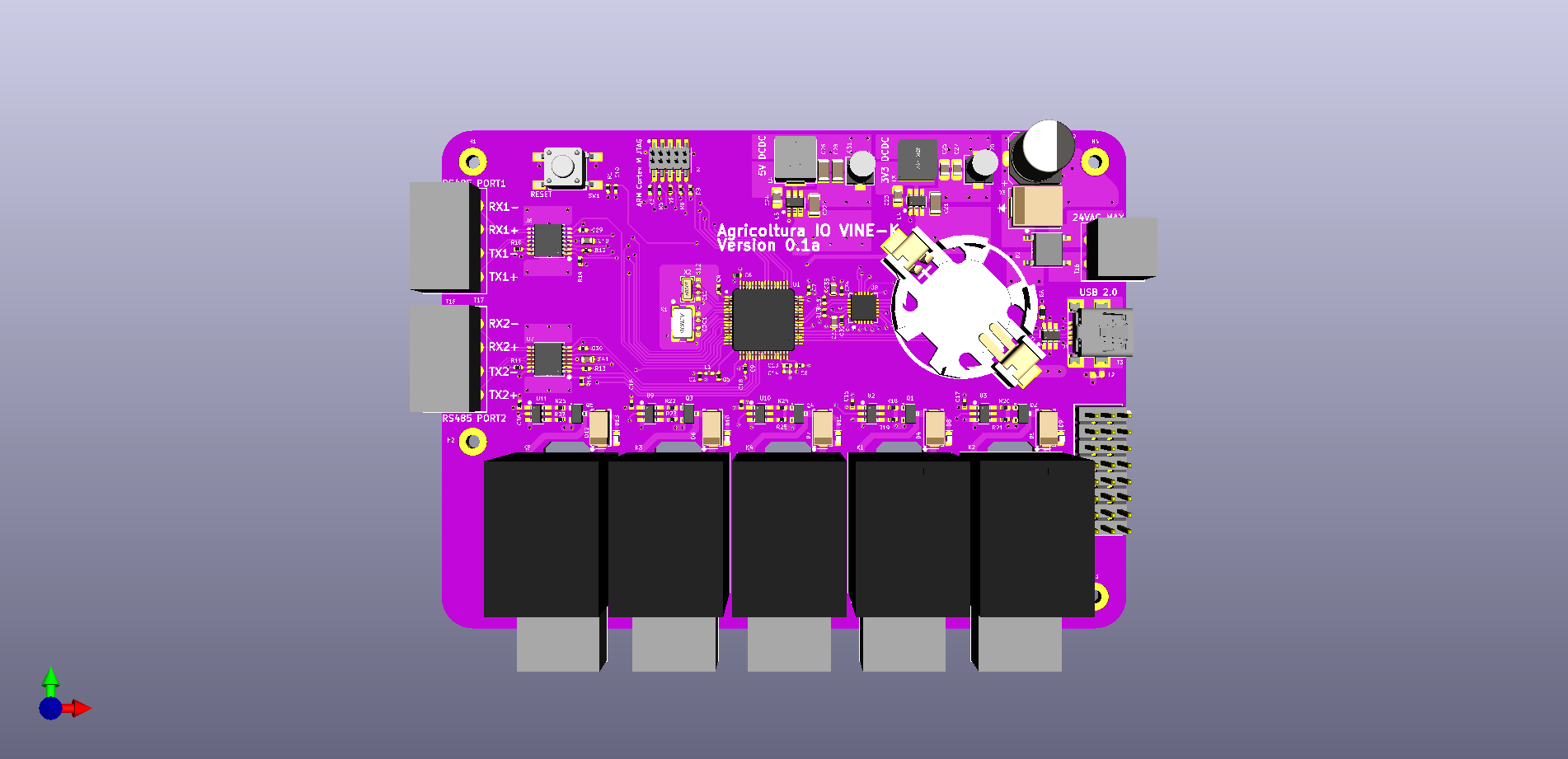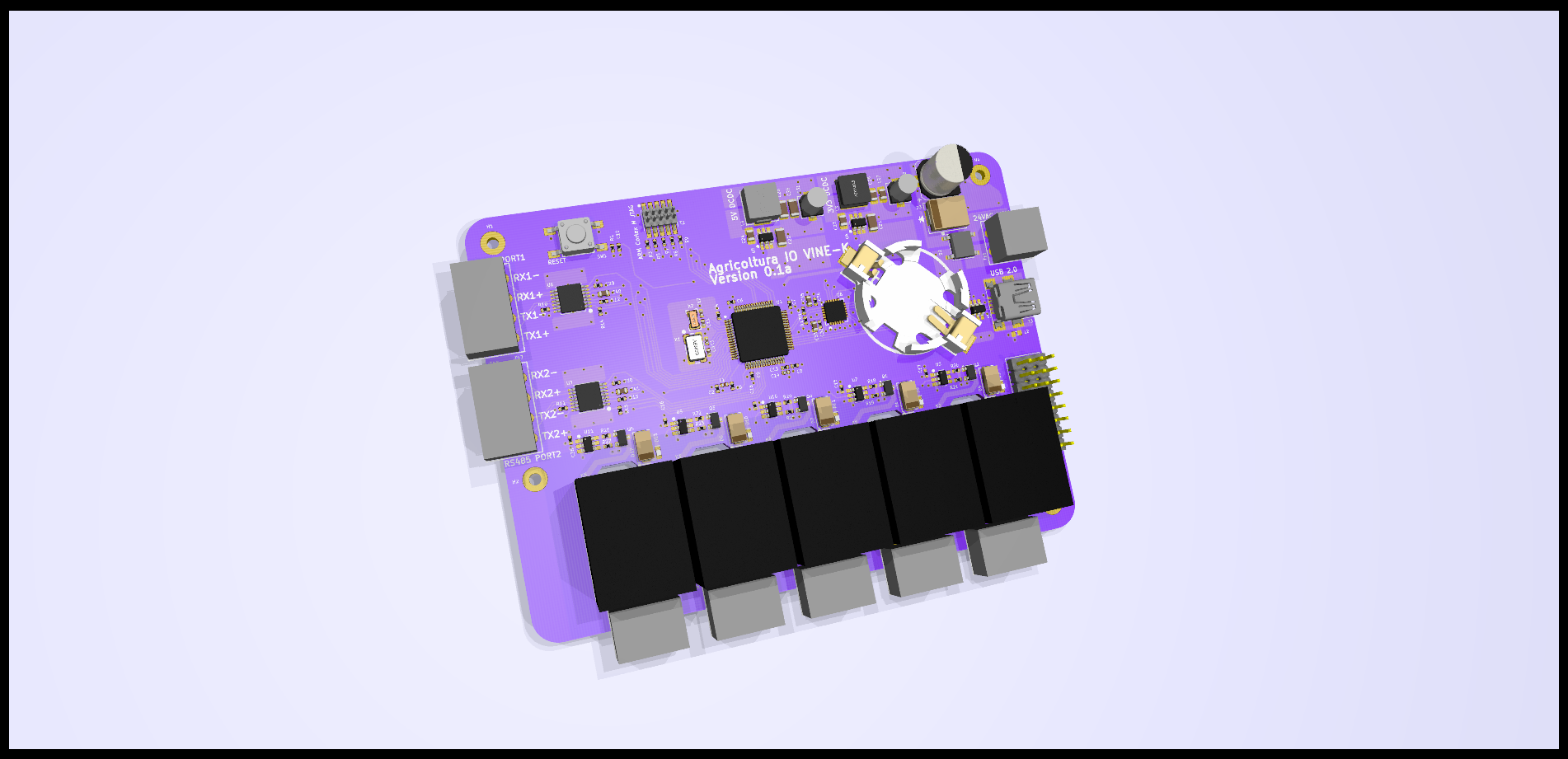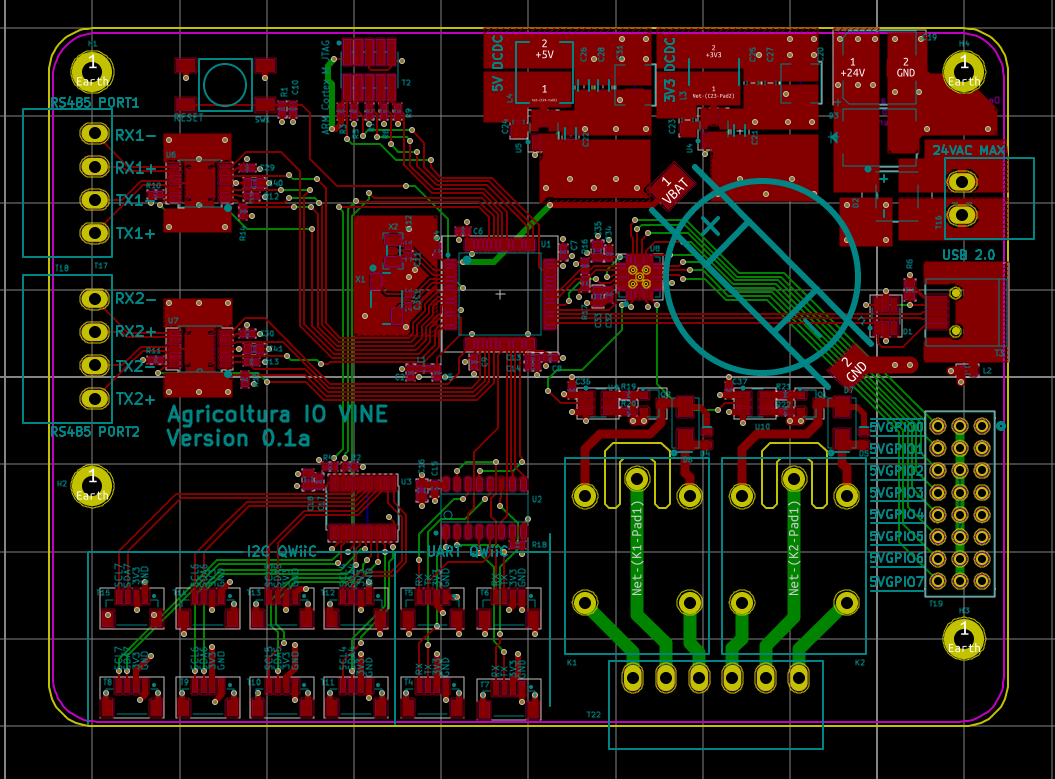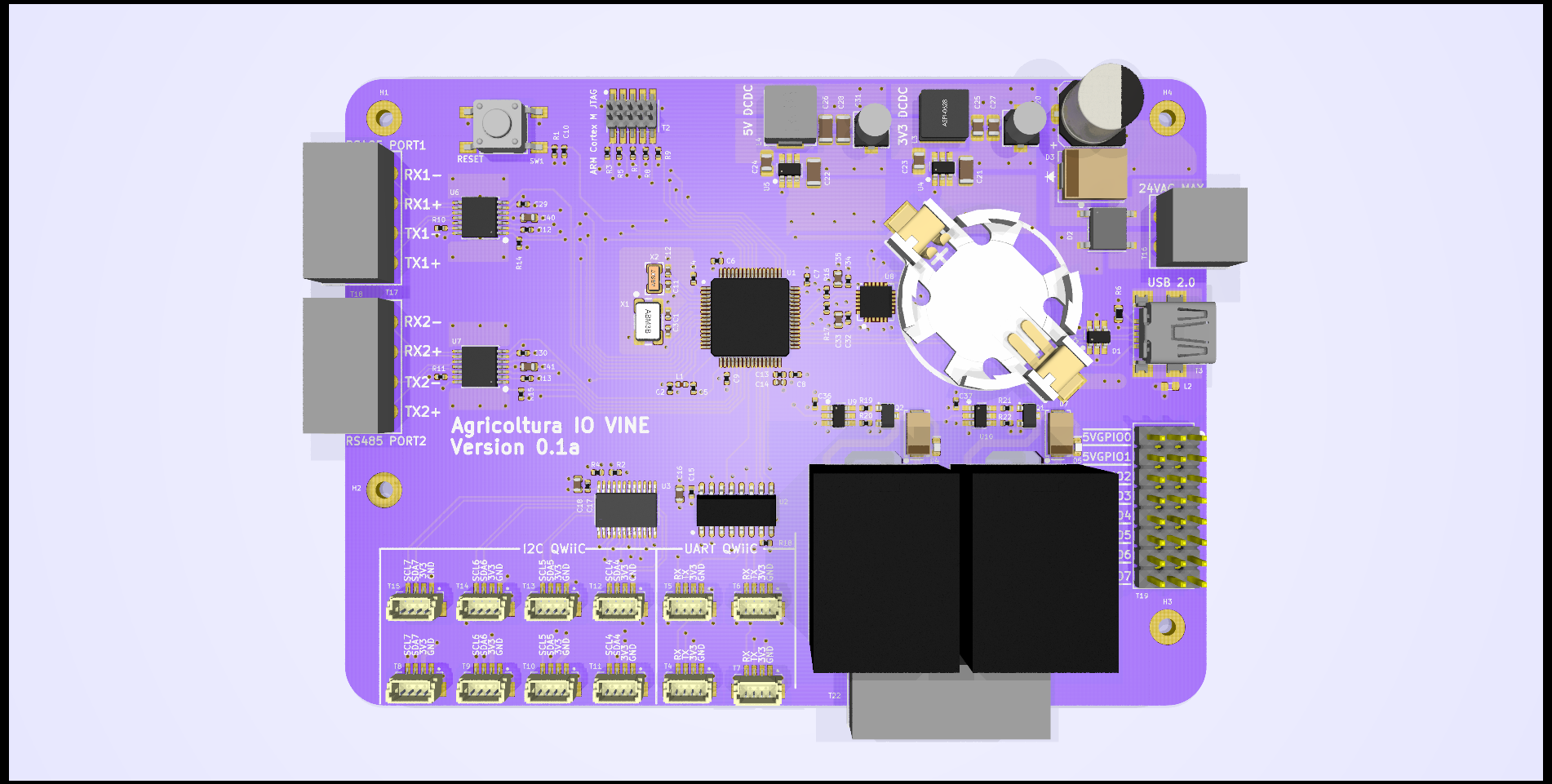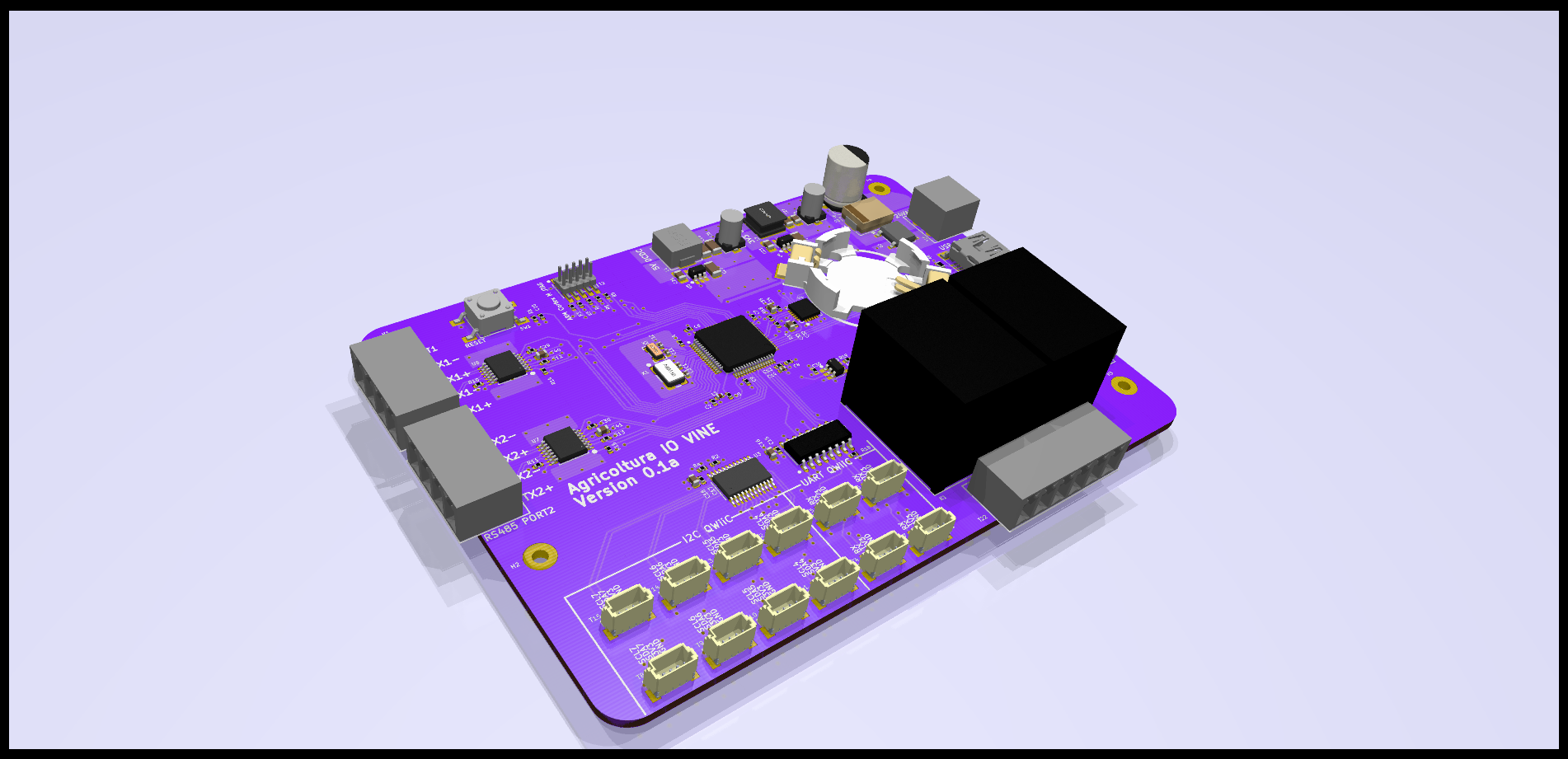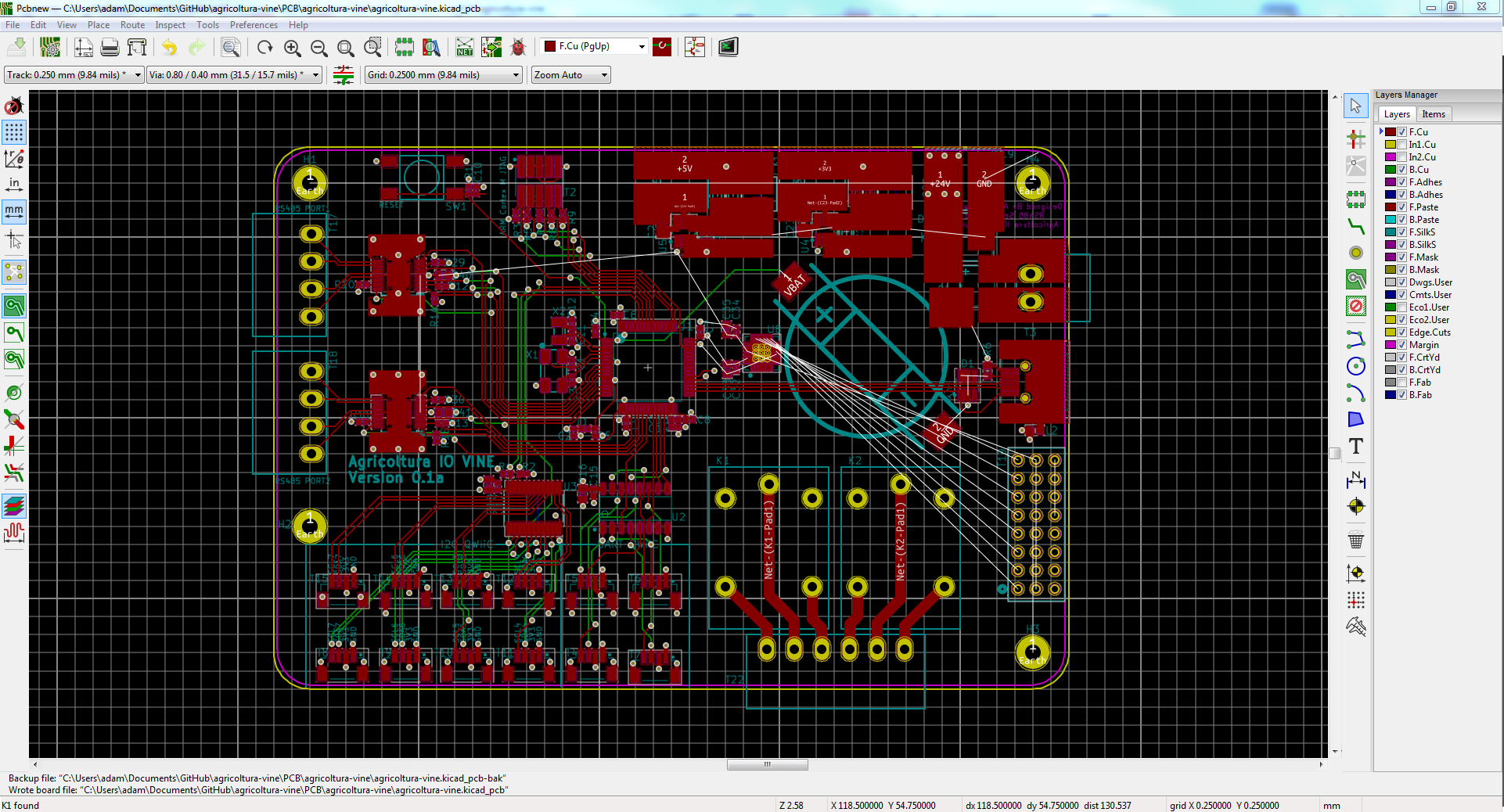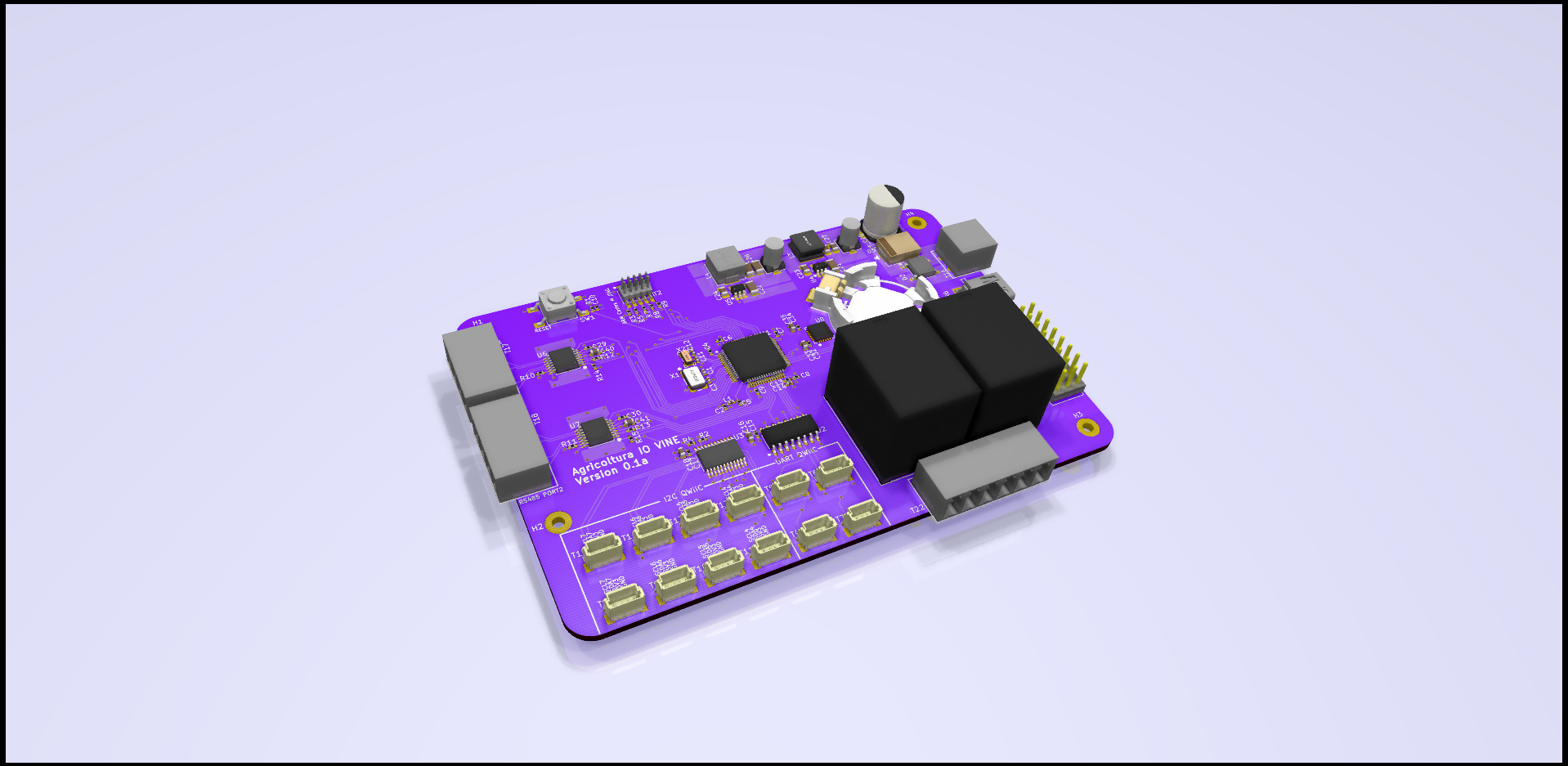-
Platform on Which To Build and Develop
11/13/2024 at 23:35 • 0 commentsHey Folks, big update to this space for me !! Finally have a controlled indoor garden platform for me to grow some plants and have a space to install and test custom electronics for growing and monitoring plants. So the big news is that i got a 4X8 grow tent and some electrical outlets wired in my basement to keep some tomatoes, peppers, and basil indoors for the winter. These are dirt plants in pots that drain into flood trays. I water the plants manually and do the same with fertilizer.
Quick Specs of Setup:
- 4X8X7 ft Grow Tent
- x2 2X4 ft Flood Trays
- x2 2X4 ft CFL T5 Light 10,000 Lumens
- 4 inch filtered intake duct fan
- 4 inch exhause duct fan
- Oscillating fan for Tomatoes
Pictures;
SO yeah I got a nice indoor garden to work with an build on, I will be slowly building it up with 3D printed upgrades and eventually custom electronics to automate things !! I plan to install two more trays and add a hydroponics setup in parallel to the dirt plants!
Stay Tuned !! -
No Commercial Potential
03/25/2024 at 19:06 • 0 commentsHey folks ! Its been a while since I've worked on this project/updated this page !! I've kept this project on the back burner and in my back pocket for a while for a number of reasons:
- Component Shortage of 2020/2021 made sourcing key components and parts for this project impossible or with very long lead times
- I had plans to commercialize this technology into a startup company (if you looked closely no sources were ever released under any license)
- I haven't had a lot of time to work on this project and prioritized other endeavors/projects- Working on this massive project alone without any collaborators is very tiring and requires a lot of effort.
It is now 2024 and I am a different man and things in my life are going well. Some long time friends near and dear to me have been working on similar agriculture automation efforts and have spent a considerable amount of time conducting research and data collection in similar areas but in a lot of areas that I haven't even gotten to with my own projects. They have spent a considerable time farming heirloom varieties of various vegetables and learned a lot about these plants. I myself spent last year growing tomatoes and other vegetables (before the rabbits killed everything but the tomatoes) in an outdoor garden I built using organic soil and fertilizer as a learning exercise. After a lot of thinking I have decided that it would be best to join forces and put all our efforts into one project, and collectively document everything in one place.
I have done some research and have come to the conclusion that an automation system like Agricolutura-IO doesn't have any real commercial potential, on the surface it sounds like a big money making idea but the truth is plants are really good at taking care of themselves as long is you follow a few basic ideas. Humans have been farming successfully for 1000s of years and scarcity of farmed food has mostly been an engineered problem and it would make more sense to use this project to solve that problem rather than contribute to it. Hence the this update "No Commercial Potential" those of you that know me well know that I am a big Frank Zappa fan and that his music and ideas have been a big influence on me most of my life, hence the borrowing of the title. Also I want this project to be fun and satisfying and if I were to commercialize it there would be a lot of fun/creative aspects of it that would have to be sacrificed. I am doing this project for me, I am doing it for my friends and with my friends and I am doing it for the people of the world to make them more free !
Watch this page very closely !! I will be releasing all the hardware and software sources under strongly reciprocal open source licensing so you can use what we create here or contribute yourselves via pull request! Lets build open source automated farms all over the world, lets end starvation , lets make everyone more free together !!
Viva La Revolution!! -
Rocking and Rolling into 2021
02/13/2021 at 09:31 • 0 commentsPhase 2 has begun ! 3D Printable enclosures and packaging solutions are being designed, boards have been tweaked, new hardware joining the ecosystem more to come soon!
pictures are 1000 words fam
-
Wireless Hardware Update
09/06/2020 at 23:20 • 0 commentsHey folks,
Got a small special update today. This is actually old news but I realized I didn't post about it yet. At the moment I am still working on the madre/mothership/basestation hardware based on the Beaglebone but before I started that I banged out one of the wireless sensor boards.
Introducing SunLeaf S1G:
![]()
![]()
![]()
There it is version 1 completely finished and ready for fabrication!! It has the following hardware features:
- ST Microelectronics SPSGRF-915 Spirit 1 Chip Module for S1G coms
- ST Microelectronics STM32F446RET6 ARM Cortex M4 180MHZ MCU
- BQ240210 Lithium Ion Solar/USB charge controller and battery management
- 500mA Lithium Polymer battery with thermistor
- I2C ports QWIIC connectors
- UART ports QWIIC connectorsThis piece of hardware will be used for developing all the long range outdoor sensors in the Agricoltura IO platform, a modified version will be developed for indoor wireless later on. This board will be running a modfified version of the original SunLeaf firmware, retooled to use the Spirit-1 module for wireless coms instead of the ESP8266 that the original used.
Thats all for now, I best get back to layout and firmware development as the clock is tickin!
-
End of Summer Update!
08/31/2020 at 05:00 • 0 commentsHey Folks!!!
So its the end of the summer and the entries for the Hackaday Prize 2020 close tomorrow morning. First I'd like to thank the community for voting this project into the Top 20 for the $500 seed funding round! My main goal at the start of the project was to hit that mark before pushing forward, so thanks again for all the support!
Moving on I haven't done as much work on the project this past month as I hoped, my day job (senior engineer at one startup, principle engineer at another ugh) work was in crunch mode and we had to find some bugs in prototypes/do a few more spins to get things right. Now the hardware I'm designing at work is functional and in production I can turn my head back to this project.
First off there have been some changes to the Vine boards, originally they were going to take 24VAC but now they are going to take 24VDC as input so I can run them off solar rechargeable batter packs, 24VDC is only the max input so that should give me some flexibility in what battery packs I want to use/charge. I do plan to develop 24VAC versions at a later date for but right now I am focusing on running these off solar power so they can be placed out doors with the only the RS485 wires needing to be run. Some other changes have been spacing the QWIIC connectors apart more and adding TVS diodes to the circuit, also the labeling of the board has been updated to look nicer.
The motherboard is now in the routing phase, it was a month ago but there were some issues, I have since cleared up the schematic errors and now have all the parts in the PCB with the correct netlists. I have also finalized the shape of the motherboard to be the same size and shape as the Vine boards, only the motherboard is a Beaglebone Green Gateway cape so it has cutouts for the BBG connectors.
Now on to licensing, as for the licensing of the software its going to be released GPL V3 and the hardware will be CERN-OHL-S when I am ready to release the sources for everything. With this project I am waiting until I have working hardware revisions before releasing anything so that my contribution to the community at large will be of a much higher quality than what i am known for.
Thanks for reading the update there will be more exciting posts in the future!
-
Agricoltura-IO Madre - Gateway Access point and RS485 Mothership
07/07/2020 at 03:23 • 0 commentsHey folks another development progress update for the project! Recently I decided that I between Vine and Vine-K I should be able to prototype and develop are the necessary/high priority hardware and software in the system meaning that I will be postponing the development of Ivy and focusing on the next big piece of hardware a family of boards call Madre.
Agricoltura Madre is the both the RS485 mothership/master controller and wireless gateway for the entire ecosystem of connected hardware. Eventually Madre will be one design a single PCB design integrating everything as one unit but in the prototyping/design phase there will be a few versions in development. So to cut to the chase these are the tentative versions as quick specs:
Beaglebone Green Gateway Based Version - Cape-A
- Seeedstudio Beaglebone Green Gateway
- 2x RS485 ports
- Sub 1GHZ wirless modem with SMA Antenna Connector
- 2.4GHZ wireless modem with SMA Antenna connector, supporting all 2.4G types
- 2x USB 2.0 ports
- USB serial monitor connection
- EthernetRaspberry Pi 4 based version:
- 2x RS485 ports
- Sub 1GHZ wirless modem with SMA Antenna Connector
- 2.4GHZ wireless model with SMA Antenna connector, supporting all 2.4G types
- Integrated WiFi (RPi4)
- USB ports (RPi4)
- Ethernet
- PoE or 24VAC PowerBeaglebone SiP Based Version
- OSD335x Family System-in-package, running Debian Linux
- 4x RS485 ports
- Sub 1GHZ wirless modem with SMA Antenna Connector
- 2.4GHZ wireless model with SMA Antenna connector, supporting all 2.4G types
- WiFi modem with SMA antenna connector
- 2X USB 2.0 ports
- USB serial monitor connection
- EthernetThe first two versions lean heavy on the prototype side of things, they are both designed as addon/daughter boards for existing single board computers that run linux and have a lot of support from their communities for just about everything you can imagine. The plan is to build both of these versions and evaluate which one has the best software support and is easiest to develop for. The third one is a full integrated version based on the beaglebone SiP aviailable from Octavo systems, this will end up being the final design depending on how things go with the first two, if RPi4 platform ends up being a better choice for this application the final version will then be based around the RPi4 compute module instead.
As for software functionality, all of these versions will be about the same, they will poll for wireless sensors or RS485 modules sampling data to a simple onboard database that will consist of plain text JSON files, this data will then be uploaded to the cloud software designed to run on a standard linux server. The madre boards will also be able to send commands to modules doing more than just sensing allowing for the user to update control schemes and monitor systems all through a user dashboard in the cloud. The madre is the gateway between an entire connected Agricoltura-IO deployment and the user. This is all rough and still in the concept phase to bare with me, lots more coming soon so stay tuned!!
Lets Rock!
-
Introducing Vine-K !!!!
07/03/2020 at 03:57 • 0 commentsHey folks, been hard at work developing all the hardware in this new ecosystem, tonight I have a new device to introduce, Vine-K. K is the universal designator symbol relays or contactors and if you can follow where I'm going with this Vine-K is a version of the Vine board that has more relays and is focused on high voltage switching applications in connected agriculture applications. VIne-K still keeps the 5V GPIO header for a bit of addons and hack prototyping, it didn't make sense to not give it a little bit of IO capability.
The gist of Vine-K is the same architecture and board size as the standard Vine board but with 5 relays and 8 5V GPIOs on a single header, quick specs are as follows:
- ST Microelectronics STM32F446RET6 ARM Cortex M4F 180MHZ MCU
- 5V Tolerant Analog Inputs
- 8x I2C interfaces
- 4x UART interface (via mux)
- 8x 5V digital IO ports
- 2x G5LE-14 DC5 SPDT Relays
- USB 2.0 connectivity
- RS485 port
- 24VAC power input
- 2A 3.3V DCDC Regulator, for supporting lots of sensors
- 2A 5V DCDC Regulator, for 5V IO and other devicesI am also excited to say that both the schematic and PCB for this board are fully complete with possible tweaks down the road. I also updated the original Vine to have dedicated connectors for the relays like Vine-K has only made sense to keep things consistent. Without further ado here is Vine-K
2D:
![]()
3D:
![]()
3D Raytaced Render:
![]()
As with my personal hackaday prize tradition I am moving very fast and this is only the 2nd of many boards to come. While working on Vine-K I started laying out the schematic for the gateway/controller which I am calling madre at the moment. First Madre will be a cape for the beaglebone green, this will allow much quicker development of the prototype, once the design is confirmed I will be rolling a complete custom PCB using the Octavo Systems Beaglebone in a chip System In Package to make it all one board. Quick specs of madre are as follows:
- Seeedstudio Beaglebone Green
- 4x RS485 ports
- Sub 1GHZ wirless modem with SMA Antenna Connector
- 2.4GHZ wireless model with SMA Antenna connector, supporting all 2.4G types
- WiFi modem with SMA antenna connector
- 1x USB 2.0 ports
- USB serial monitor connection
- EthernetStay tuned for more updates on the Agricoltura IO project and family of connected hardware, we are rolling hard and fast , its gonna be a good summer!!
Lets Rock!!!!
-
Vine Is Done! (well first pass)
06/30/2020 at 02:48 • 0 commentsHey folks!! Got some exciting news over the weekend and this past evening I have finished routing the PCB for Vine!! I had to do some tweaks to the board shape giving it a small increase in size so I coudl accommodate the proper relay driiving circuity , the rest of the work was just powerplane design and routing. I am very pleased with the results:
![]()
3D Renders:
![]()
![]()
Overall I'm very pleased with how this first board in the project has come out. I took a long time deliberating on feature set and orientation/location of parts/features until I got it to look just right. Its hard to describe the aesthetic I want for my hardware I want things to look great but also be functional this particular design took a bit longer than others but again I'm very happy with the layout. The next step with this design will be to put it through DRC testing and get it ready for fabrication. I will be using OSHPark for getting PCBs made and getting parts from Digikey. The plan is to hand assemble a few of these so I can build a small scale RS485 network of them and deploy them on the NFT hydroponic garden I built in 2015 thats currently in my basement. (NFT Unit project: https://hackaday.io/project/7116-low-cost-nft-hydroponic-garden-under-250)
Stay tuned for more updates!! I'll be working on two other variants of Vine one with more relays and one that is all sensors, as well as the Ivy board which is a version that has all the MCU pins broken out for daughter card addons. Stay tuned we are just getting started and like all my past entries expect a lot of hardware designs!!!
-
Here We Go First Piece of Hardware: Vine
06/27/2020 at 03:44 • 0 commentsHey folks this is the first big update aside form the anouncement and rundown of the overall project. So before the page even went up I had been working out what sort of boards and subsystems I'd need to implement for this sensing network, I then began implementing these ideas and made the page once i felt things got to a certain point. The first board I started working on was Vine, well now at this point I've gotten it to the point where i want to share what I've been doing with it.
In the first announcement I mentioned general specifications of the Vine board and mentioned that there will be multiple versions of Vine to cover all the needs in a potential system, sensing, 5V IO, and high voltage switching. I decided to implement all those features into the first Vine making it a kitchen sink kind of board, its got a little bit of everything to get started and what not. These are the new specs:
- ST Microelectronics STM32F446RET6 ARM Cortex M4F 180MHZ MCU
- 5V Tolerant Analog Inputs
- 8x I2C interfaces
- 4x UART interface (via mux)
- 8x 5V digital IO ports
- 2x G5LE-14 DC5 SPDT Relays
- USB 2.0 connectivity
- RS485 port
- 24VAC power input
- 2A 3.3V DCDC Regulator, for supporting lots of sensors
- 2A 5V DCDC Regulator, for 5V IO and other devicesThe only real change form the perspective of features is losing 8 5V outputs in place of two relays for high voltage switching, but in the end this simplified the design and removed the need for a few digital components. I'm now using an IO expander that does the level conversion from 3V3 to 5V all built in, simplifying the BOM and PCB layout. Here is the latest mockup of the design:
2D Progress in KiCAD, still need to add the relay driver circuit, but this is the mockup
![]()
3D raytracing render:
![]()
Im in the process of selecting components for the relay driver circuit and will be implementing that before the next update. The Relays and 5V IO are all being driven off the IO expander IC which will make sofware and the rest of the layout simple. Stay tuned for the next update on Vine and the rest of the family of hardware, I'm hoping to go on a design binge this weekend so expect a lot of progress.
Lets Rock!
-
So It Starts!
06/26/2020 at 01:41 • 0 commentsHey folks, its been a while since I've done a good honest entry into the Hackaday prize, I won't bore you with the details just know that I'm back and ready to shine again!
Lets get thins started with a general overview of the Agricoltura IO system! The System is an RS485 chain and multiple wireless network of connected devices for all sorts of agriculture, farming, and gardening applications. The system is comprised of quite a few hardware devices to cover the areas of wired sensing and wireless sensing, the project description of the page has a comprehensive rundown of the whole damn thing but in this post I am going to be talking about the two projects I'm working on at the beginning.
![]()
To Start things out I am tackling the RS485 side of things with two boards Vine and Ivy, Viny is a general purpose sensing and IO board of which there will be two variants, one will be focused on sensing while the other will support some sensing but also support relay switch and control of higher voltage devices. Ivy is designed to be a development platform with the same brains/power/serial coms as the Viny board but instead of featuring muxing and interfaces for a variety of sensors and devices it will have all the pins of the microcontroller broken out to a large pin header for adding functionality through daughter cards. What follows is a short rundown of each board followed by a graphical diagram explaining the subsystems of each board and how they are related.
Vine
Dasiy Chain-able RS485 sensor interface, connectors for Sparkfun QWIIC devices, UART sensors, along with 5V IO for driving relays and other related devices. Designed as a generic general purpose board to support many functions. This ist he RS485 spiritual successor to the SunLeaf platform.
- ST Microelectronics STM32F446RET6 ARM Cortex M4F 180MHZ MCU - 5V Tolerant Analog Inputs - 8x I2C interfaces - 4x UART interface (via mux) - 8x 5V outputs - 8x 5V digital IO ports - USB 2.0 connectivity - RS485 port - 24VAC power input - 2A 3.3V DCDC Regulator, for supporting lots of sensors - 2A 5V DCDC Regulator, for 5V IO and other devices
![]()
Ivy
Daisy Chain-able RS485 customize-able device. Very similar to Vine almost the same in everyway except instead of having Sparkfun QWIIC conenctors, Ivy will have a single strip header (2.54mm pitch) similar to the Raspberry Pi that will allow for the development of daughter cards for specific functionalities and purposes. Ivy is primarily for the development of new variants of Vine and for customized hardware for functions that are not as common place.
- ST Microelectronics STM32F446RET6 ARM Cortex M4F 168MHZ MCU - 5V Tolerant Analog Inputs - 8x 5V outputs - 4x 5V digital IO ports - USB 2.0 connectivity - RS485 port - 24VAC power input - All MCU Pins broken out to header - Relies on daughter cards for specific functionality - 2A 3.3V DCDC Regulator, for supporting lots of sensors - 2A 5V DCDC Regulator, for 5V IO and other devices
![]()
Stay tuned for more updates on the hardware development side of things, I have been working very hard in secret designing all the circuits in the subsystems of these boards and implementing the first variant of Vine, when thats done, the 2nd variant of Vine will follow then Ivy. I am so excited to keep sharing my progress as I go.
Lets Rock!
Agricoltura - IO
A connected control system for all agriculture applications based on RS485 control nodes and multiple wireless sensor networks
 AVR
AVR